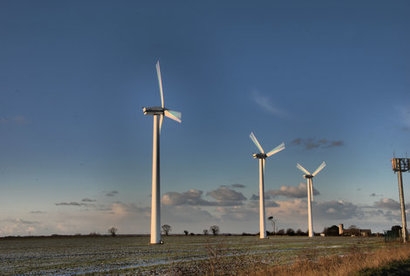
Energy storage, smart-charging EVs, demand response and interconnectors represent four types of flexibility that can accelerate the transition to a cleaner power system and ultimately enable the efficient integration of 80 percent or more renewable energy by 2040, find two studies focused on the UK and Germany. Otherwise, our expensive power system would be reliant on fossil-fuelled backup and installing excess wind and solar capacity.
The ‘Flexibility Solutions for High-Renewable Energy Systems’ reports model a number of alternative scenarios for future power systems in the UK and Germany, respectively, depending on how each flexibility technology might develop in the coming years.
Energy storage and smart electric vehicle charging provide flexibility by moving large volumes of renewable energy to periods of high demand, or moving demand to periods of high renewable generation. Dispatchable demand response reduces the need for fossil-fired backup plants in the power system, reducing emissions. Interconnecting to Nordic hydro can address periods of both excess supply and excess demand, providing different benefits over the decades as the needs of the system evolve.
The two studies highlight that policies and regulation accelerating the adoption of these technologies are key to make a cleaner, cheaper, and more efficient power system possible.
Specific findings for the UK include:
None of the scenarios halt the transition to a low-carbon power system. In all scenarios, the renewable share of generation exceeds 70 percent by 2030 as wind and solar become dominant, thanks to their dramatic and ongoing cost improvements. However, without new sources of clean flexibility, the system will be oversized and wasteful, making it 13 percent more expensive by 2040 and with 36 percent higher emissions.
Greater electrification of transport yields major emissions savings with little risk to the power generation system. Avoided fuel emissions far outstrip added power sector emissions in the UK The power generation system will comfortably integrate all these electric vehicles, and the system benefits are even greater if most EVs charge flexibly. However, local distribution networks are likely to face challenges.
Accelerated energy storage development can hasten the transition to a renewable power system in the U.K., with significant benefits by 2030 including a 13 percent emissions reduction and 12 percent less fossil backup capacity needed.
Specific findings for Germany include:
In Germany, adding flexibility supports coal through 2030, even as renewables grow to dominate the market. This counterintuitive finding is not due to a problem with batteries, EVs, demand response or interconnectors – cheap coal is the culprit. Flexible technologies are important because they can integrate inflexible generation – and in Germany’s case, its inexpensive lignite plants also benefit. To decarbonise, Germany needs to address existing coal generation while investing in renewables, flexibility and interconnection.
Still, by 2040, adding more batteries, flexible electric vehicles and interconnections with the Nordics all enable greater renewable penetration and emissions savings. More flexible demand, on the other hand, reduces the need for battery investment.
Even with Germany’s coal-heavy power, adding EVs reduces transport emissions.
“There is now little doubt that renewable energy will be the dominant force in the power sector for decades to come” said Albert Cheung, head of global analysis at BloombergNEF. “The next challenge is to make sure these sources are complemented by clean forms of flexibility – storage, demand and interconnection – to deliver cheaper, deeper decarbonisation”.
Cyrille Brisson, Eaton EMEA vice president of sales and marketing, added that the relentless advance of solar and wind energy technologies are driving the world inexorably towards an electricity system dominated by variable renewable power generation. Combined with the expected growth in electric mobility, the world is now in the midst of an energy transition which will massively lower carbon emissions and improve air quality. However, this opportunity will be limited unless energy markets are designed and regulated in a way that unlocks the full value of flexibility in the electric system.
“The time is already upon us to prepare and start investing in the technologies, services, and modifications that can enable our energy system to cope with the dramatic shift in how we generate and use electricity” Mr Brisson said.
For additional information:
Flexibility Solutions for High Renewable Energy Systems

